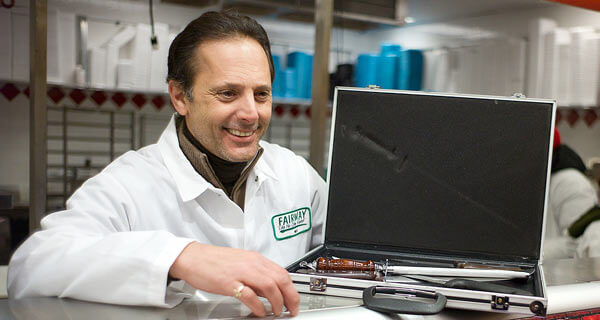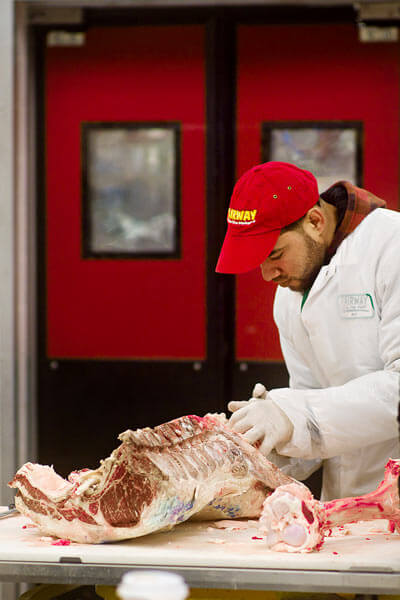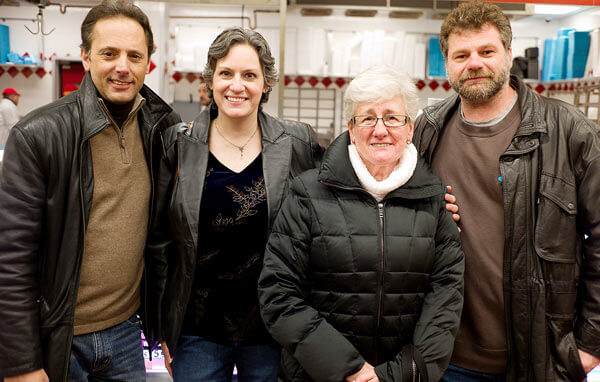By Rich Bockmann
Wholly (quarter) cow!
A 250-pound hindquarter of USDA prime grade beef hung from a hook behind the meat counter at the Douglaston Fairway last week, waiting to be dissected by master butcher Ray Venezia for the winner of the market’s opening-day raffle.
Elizabeth Dusman, who went to Fairway’s opening day from her home in Manhasset Hills, L.I., said she had prepared to collect her prize Jan. 11 by watching videos of Venezia on YouTube and borrowing an extra freezer from her sister-in-law.
“I think it’s going to be about 130 pounds once it’s all trimmed,” she said. “I have two boys, 12 and 14. They can do quite a bit of damage.”
Fairway said the retail value of the various cuts was worth more than $1,200, and on top of that Dusman got to experience the personal attention and breadth of knowledge Venezia brings to his craft.
“How big is your family?” the third-generation butcher asked, and when she replied, “Four,” he suggested the top round would yield two nice roasts.
There is an art to butchering an animal — to finding out what the customer wants and providing the most appropriate cut — one that is in Venezia’s blood. His grandparents owned a little store in Elizabeth, N.J., he said, back when the only kinds of stores were the little ones.
Venezia learned his trade from his father and uncle, who he said taught him to take pride in his work.
“You didn’t want the guy next to you to be better,” he explained, and said he learned the old-school way. “They didn’t say, ‘You cut it the wrong way.’ All of a sudden a piece of meat hits you in the side of the head.”
As shopping carts rattled by and the busy meat counter hummed, Venezia got started by cutting a shell steak from the short loin. When it came time to carve out a large chunk of pure white fat underneath, he took special care not to mar the tenderloin — probably the most expensive cut of meat on the animal — which Dusman chose to take home as a whole roast, rather than as individual filet mignon, porterhouse or T-bone steaks.
Venezia pointed out that both the porterhouse and T-bone cuts are made up of the tenderloin and strip steaks. The difference is in how much tenderloin the steak has: The porterhouse is cut from the rear of the short loin where the tenderloin is larger, while the T-bone is cut from the front where it is smaller.
“We’re like rocket scientists,” he said with jovial self-deprecation. “If it looks like a ‘T,’ we call it a T-bone.”
And like a rocket scientist, Venezia has an encyclopedic knowledge of his profession. As Fairway’s master butcher for the last 14 years, he is responsible for training every butcher in the company’s 10 markets.
As he pulled out a large saw to cut halfway through the hindquarter, Venezia explained that the thicker cuts of meat are the most tender because they retain the most moisture.
“I like them nice and thick,” Dusman agreed, “because I like my steaks medium rare. I could eat steak tartar. They can’t be rare enough!”
Reach reporter Rich Bockmann by e-mail at rbockmann@cnglocal.com or by phone at 718-260-4574.




































